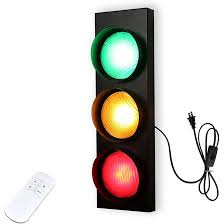
Introduction
Traffic lights play a crucial role in maintaining order and safety on our roads. As urban areas continue to grow, the management of vehicular and pedestrian traffic becomes increasingly complex. The effective utilization of traffic lights is paramount in reducing traffic accidents, ensuring the smooth flow of vehicles, and enhancing overall urban mobility. With ongoing advancements in technology, the importance of traffic lights extends beyond just controlling traffic; they are vital in integrating smart city initiatives and improving sustainability.
The Evolution of Traffic Lights
Originally developed in the late 19th century, traffic lights have undergone significant transformations. The first-ever traffic signal was installed in London in 1868, using gas lights. However, it was not until the introduction of electric signals in the 1920s that traffic signals became widespread. Today, most traffic lights operate on computerized systems that adapt to traffic patterns, increasing their efficiency and effectiveness.
Current Trends in Traffic Light Technology
Recent advancements in traffic light technology, such as adaptive traffic signals, have emerged to address the challenges of ever-increasing traffic volumes. These sophisticated systems use sensors to analyze real-time traffic conditions and optimize signal timings accordingly. For example, cities like Toronto and Vancouver have implemented smart traffic light systems that not only enhance traffic flow but also reduce emissions by minimizing waiting times.
The Impact of Traffic Lights on Safety
Traffic lights significantly contribute to road safety. According to the Traffic Injury Research Foundation (TIRF), intersections with traffic signals tend to have lower rates of serious accidents compared to those without. In 2022, the organization reported a 20% reduction in collisions at intersections that had upgraded to modern traffic light systems. Additionally, pedestrian safety has improved due to dedicated crossing signals and countdown timers, which help reduce the likelihood of accidents.
Future of Traffic Lights
As cities continue to evolve, the role of traffic lights will become increasingly important. Experts predict that future traffic management systems will incorporate artificial intelligence (AI) and machine learning to enhance the efficiency of traffic lights further. These technologies can help cities respond more dynamically to changes in traffic patterns, ultimately leading to smarter and safer urban environments.
Conclusion
Traffic lights are more than just an inconvenience; they are essential components of a well-functioning urban landscape that prioritizes safety and efficiency. As technology continues to advance, we can expect these systems to evolve, providing not just improved traffic management but also contributing to the overall quality of urban life. For citizens, understanding the significance of traffic lights can lead to better compliance with traffic rules, ensuring safer streets for everyone.



